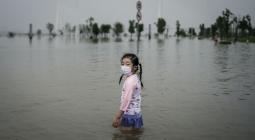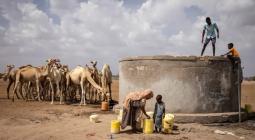The Red Cross is already green
Nowadays most of the emergencies that volunteers respond are climate-change related, writes Jagan Chapagain of the Red Cross
Lorenzo Marsili is right that the climate crisis demands what he calls a “planetary civil protection force” to help those hardest hit (War gave us the Red Cross. Now climate disaster means we need a Green Cross too, 9 January). Luckily we already have one – not an “equivalent” to the Red Cross, but the Red Cross itself. Conflict zones remain the focus of one component of our international movement, the International Committee of the Red Cross. But nowadays most of the emergencies that our 16 million volunteers in 191 Red Cross and Crescent national societies respond to, and the policy work of the International Federation of Red Cross and Red Crescent Societies in Geneva, are climate-change-related. Our 2030 strategy describes the climate and environmental crisis as the top global challenge we face, a multiplier exacerbating all else.
Anticipatory action and responding to ever more frequent and extreme climate and weather events is at the heart of our humanitarian relief. We help with early warning systems, support evacuations and relocations, and rebuild lives and livelihoods. For the last few years, the overwhelming majority of our disaster-response emergency fund has gone to national societies dealing with extreme climate and weather hazards. And at December’s Cop28 climate conference, we helped establish the crucial “loss and damage fund”, which will support the hardest-hit communities. Our work could always do with more attention and money, but the Red Cross is already green too.
Cover photo: Workers from Korea Red Cross prepare aid supply kits for North Korean victims of devastating floods, Seoul, August 2007. Photograph: AP




